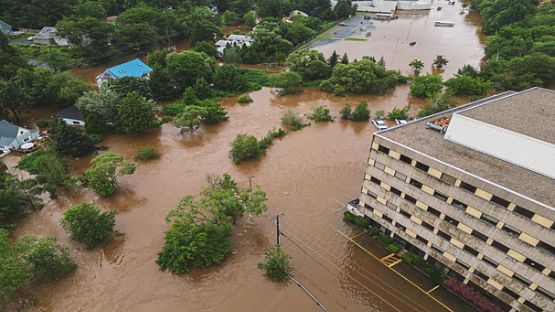Here are some tips and suggestions to reconfigure your warehouse to lower your risk of product damage.
Protect your assets with a well laid-out building
Think of your warehouse as a machine performing separate but dependent operations. Rethink your layout by:
- Separating your office from warehouse activity to minimize contaminating sensitive office equipment with dust and dirt. Do the same with server rooms.
- Installing dedicated heating and cooling to ensure rooms stay at an ideal operational level.
- Dedicating separate areas for shipping, receiving and dead or returned stock. Mixing these up, which is easy when they overlap, can cost money and time.
Prevent warehouse damage by isolating hazardous goods
If you store products that are flammable, combustible, oxidative or corrosive, organize your warehouse to include separate rooms that are designed to protect these and other products. Equip hazardous-goods storage areas with the spill-containment and cleanup equipment necessary to ensure stability and safety and to minimize serious risk. Separate storage rooms can also reduce potential damage to products that are sensitive to heat, light, water or other elements.
Design a warehouse layout for efficient traffic and workflow
Mark pedestrian access routes and organize your warehouse with aisles big enough to accommodate traffic and optimize workflow. Avoid awkward or uneven pallet storage known as honeycombing that renders some storage areas useless and wastes space. Barriers can protect workers from heavy equipment and stock from cosmetic damage. Install rack storage to maximize picker productivity. Dedicate well-organized areas for packaging materials and make sure workers know where these areas are.
Understand how storage layouts can minimize fire risk
All products can have varying degrees of flammability, and it is your responsibility as a business owner to understand their storage requirements. Ensure that your warehouse is large enough to accommodate your products without having to store materials in aisles or beyond sprinkler system capabilities. You should also:
- Avoid excessively high stacking of products, which facilitates fire spread.
- Store waste in external containers away from buildings.
- Prohibit the use of temporary or open flame heaters.
- Ensure sprinkler and fire alarm systems are operational and functioning as required.
Reduce outdoor storage risks
View outdoor storage as an extension of your warehouse and ensure both its security and protection from temperature extremes, fire and other exposures. Whether you use pallets, trailers or other storage products, place them in an area that maximizes workflow. Consider fencing to improve security and protect against unauthorized access, vandalism and theft.
For more information, contact your insurance broker. If you don’t have one, use our Find a Broker tool.
Sources
Camplin, J. C. (2008, October 1). Hazardous Materials: Proper Storage Strategies. Retrieved from Material Handling: https://www.facilitiesnet.com/materialhandling/article/Hazardous-Materials-Proper-Storage-Strategies-Facility-Management-Material-Handling-Feature--9797
Fabregas, K. (2017, April 15). Planning Your Warehouse Layout - How to Set Up Efficient Storage, Packing and Shipment Areas. Retrieved from FItSmallBusiness: https://fitsmallbusiness.com/warehouse-layout/













